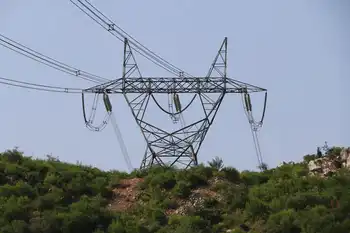Missing 64 at hydroelectric dam likely dead
By National Post
Arc Flash Training - CSA Z462 Electrical Safety
Our customized live online or in‑person group training can be delivered to your staff at your location.

- Live Online
- 6 hours Instructor-led
- Group Training Available
"Finding anyone alive in the flood zone is unlikely, but the search continues," Vasily Zubakin, the chairman of state-controlled hydro-power company RusHydro, said through a spokesman.
A senior official at a local hospital near the Sayano-Shushenskaya hydroelectric plant said the death tally had officially risen to 12 from the 10 given on August 17.
But 64 people were unaccounted for after a turbine room flooded at the power station, Russia's largest. Emergencies Minister Sergei Shoigu confirmed this figure when he arrived on the scene.
Russia has been plagued for years by mine collapses, gas explosions and other catastrophes linked to creaking Soviet-era infrastructure.
After the global economic downturn gripped Russia last year, ambitious plans to revamp roads, ports and power stations were either scaled back or scrapped.
Mr. Shoigu said that a sudden surge in water pressure had burst through one of the turbines and caused the flood. "The main reason for the accident was a hydraulic pressure surge, but the cause of that surge still needs to be investigated," he said.
Producing three times as much power as the Hoover Dam on the U.S. Colorado river, the Sayano-Shushenskaya station was touted as a jewel of Soviet engineering when it was launched in 1978 on Siberia's Yenisei river.
The turbines, however, have not been overhauled since Soviet times, and the firm that built the destroyed turbine told Reuters that it was too old to work safely.
"The machine is 30 years old. All guarantees of its functioning had passed," said Maria Aliyeva, a spokeswoman for engineering firm Power Machines, adding that the theoretical maximum age of the turbine is 25-30 years.
The Vesti television news channel ran amateur footage showing a fiery explosion near the base of the dam amid a torrent of gushing water.
The emergencies ministry said in a statement there was no structural damage to the station and no danger that the dam would burst.
The accident destroyed three of the station's ten power generating units, and Boris Bogush, a board member of RusHydro, said it would cost at least 10 billion roubles (US$309.8- million) and up to 20 months to fix.
"The event once again points to the poor condition of the equipment and lack of investment in the sector," VTB Capital analysts said of the accident. "It could force the authorities to re-balance the key goals in the sector's outlook."
United Company RUSAL, the world's largest aluminum producer, operates two smelters within 50 km of the dam and said production losses as a result of the accident could potentially equal 11% or more of last year's output.
"We consider that no less than 500,000 tonnes of aluminum production — or maybe even more — could be under threat," Artyom Volynets, United Company RUSAL's director of strategy and corporate development, said.
RusHydro's publicly traded shares remained suspended in Moscow after falling more than 15% in London on the previous day. Around 60% of the company's stock is held by the government.











